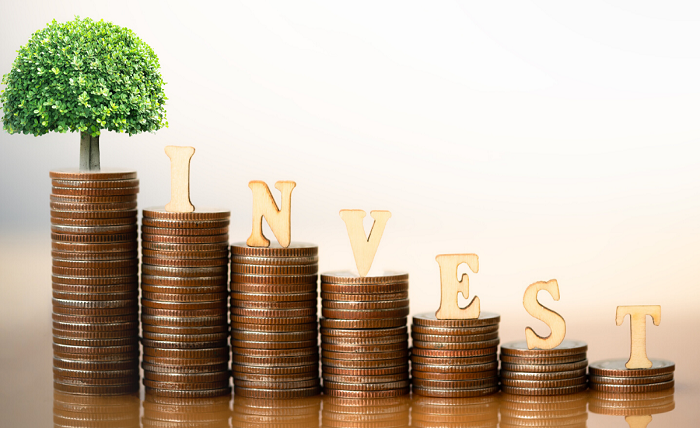How to Invest Your Money Wisely and Grow Your Wealth

Investing your money can be a great way to achieve your financial goals and build your wealth. However, investing can also be risky and complicated, especially if you are not familiar with the basics of investing. In this article, we will explain some of the key concepts and principles of investing, and provide some tips and resources to help you get started.
What is Investing?
Investing is the process of putting your money into assets that have the potential to increase in value over time. These assets can be stocks, bonds, mutual funds, real estate, gold, cryptocurrencies, or any other type of investment that suits your risk tolerance and objectives. The main goal of investing is to earn a return on your money, either through income (such as dividends or interest) or capital appreciation (such as price increase or capital gains).
Also read more Ellenbecker Investment Group: A Family-Owned Firm with a Holistic Approach to Financial Planning
Why Should You Invest?
Investing your money can have many benefits, such as:
- Growing your money faster than saving it in a bank account or under your mattress. The average annual return of the S&P 500 index, which tracks the performance of 500 large US companies, was about 10% from 1926 to 2020. This means that if you invested $1,000 in the S&P 500 in 1926, it would have grown to about $10 million by 2020 (assuming you reinvested all dividends). On the other hand, if you kept your $1,000 in a bank account with a 1% interest rate, it would have grown to only about $2,200 by 2020.
- Beating inflation and preserving your purchasing power. Inflation is the general increase in the prices of goods and services over time. It reduces the value of your money and erodes your purchasing power. For example, if the inflation rate is 3% per year, a loaf of bread that costs $1 today will cost $1.03 next year, $1.06 the year after, and so on. This means that you will need more money to buy the same amount of goods and services in the future. Investing can help you overcome inflation by earning a higher return than the inflation rate.
- Achieving your financial goals and securing your future. Whether you want to buy a house, start a business, send your kids to college, retire comfortably, or leave a legacy for your loved ones, investing can help you reach your financial goals faster and easier. By investing your money wisely and consistently, you can build a diversified portfolio that generates passive income and grows over time.
How to Start Investing?
Before you start investing your money, you need to do some preparation and planning. Here are some steps you should follow:
- Set your financial goals and time horizon. You need to have a clear idea of why you are investing, how much money you need, and when you need it. This will help you choose the right investment strategy and asset allocation for your situation. For example, if you are saving for retirement in 30 years, you can afford to take more risk and invest more in stocks than if you are saving for a down payment in 5 years.
- Assess your risk tolerance and personality. You need to understand how much risk you are willing and able to take with your money. Risk tolerance is influenced by factors such as your age, income, expenses, savings, debt, net worth, and emotional factors. Generally speaking, the higher your risk tolerance, the more aggressive your investment strategy can be. However, you also need to consider your personality and preferences. For example, some people may enjoy trading stocks frequently and watching the market movements closely, while others may prefer a more passive and long-term approach.
- Build an emergency fund and pay off high-interest debt. Before you invest any money in the market, you should have an emergency fund that can cover at least 3 to 6 months of your living expenses in case of unexpected events such as job loss, medical emergencies, or car repairs. This will prevent you from having to sell your investments at a loss or borrow money at high interest rates when you need cash urgently. You should also pay off any high-interest debt such as credit cards or payday loans as soon as possible. This will free up more money for investing and reduce your financial stress.
- Choose an investment account and platform. You need to decide where and how you want to invest your money. There are different types of investment accounts and platforms available depending on your needs and preferences. Some of the most common ones are:
- Brokerage account: A brokerage account is an account that allows you to buy and sell various types of investments such as stocks, bonds, mutual funds, ETFs (exchange-traded funds), options, futures, etc. You can open a brokerage account with an online broker or a traditional broker that offers more services and guidance. Some brokers may charge commissions or fees for each trade or transaction, while others may offer commission-free or low-cost trading options. You should compare different brokers and choose the one that suits your needs and budget.
- Retirement account: A retirement account is a special type of account that is designed to help you save for retirement. There are different types of retirement accounts such as 401(k), IRA (individual retirement account), Roth IRA, etc. Each type of retirement account has its own rules, benefits, and limitations. For example, some retirement accounts may offer tax advantages such as tax deductions or tax-free growth, but they may also have restrictions on when and how you can withdraw your money without penalties or taxes. You should consult a financial advisor or do your own research to find out which type of retirement account is best for you.
- Robo-advisor: A robo-advisor is an online platform that uses algorithms and technology to create and manage your investment portfolio for you. You just need to answer some questions about your goals, risk tolerance, and preferences, and the robo-advisor will automatically invest your money in a diversified portfolio of low-cost ETFs that matches your profile. The robo-advisor will also monitor and rebalance your portfolio periodically to keep it aligned with your goals and risk level. Some robo-advisors may also offer additional features such as tax-loss harvesting, automatic deposits, financial planning tools, etc. Robo-advisors typically charge a small percentage of your assets under management as a fee, which may vary depending on the robo-advisor and the amount of money you invest.
- DIY investing: DIY investing is when you create and manage your own investment portfolio without relying on any intermediaries or platforms. You have full control and responsibility over your investment decisions and actions. You can use various tools and resources such as books, podcasts, blogs, newsletters, courses, forums, etc. to learn about investing and find investment ideas and opportunities. However, DIY investing also requires more time, effort, knowledge, and discipline than other options. You should only choose this option if you are confident and comfortable with investing on your own.
- Choose your investments and build your portfolio. Once you have an investment account and platform, you need to decide what types of investments you want to buy and how much of each type you want to hold in your portfolio. This is called asset allocation, which is the process of dividing your money among different asset classes such as stocks, bonds, cash, etc. Asset allocation is one of the most important factors that determine your investment performance and risk level. You should choose an asset allocation that matches your goals, time horizon, risk tolerance, and personality. There are different methods and strategies for choosing an asset allocation, such as:
- Rule of thumb: A rule of thumb is a simple formula or guideline that helps you determine your asset allocation based on a single factor such as your age or risk level. For example, one popular rule of thumb is the “100 minus age” rule, which suggests that you should subtract your age from 100 and invest that percentage of your portfolio in stocks, and the rest in bonds. For instance, if you are 30 years old, you should invest 70% (100 – 30) of your portfolio in stocks and 30% in bonds. However, rules of thumb are not very precise or personalized, and they may not suit everyone’s situation or preferences.
- Risk profile: A risk profile is a questionnaire or assessment that helps you measure your risk tolerance and personality based on various factors such as your income, expenses, savings, debt, net worth, goals, time horizon, emotional factors, etc. Based on your risk profile score or category (such as conservative, moderate, aggressive), you can choose an asset allocation that reflects your risk level. For example, if you have a high risk tolerance and an aggressive personality, you may choose an asset allocation that has a higher percentage of stocks than bonds or cash. However, risk profiles are not very comprehensive or dynamic, and they may not capture all the nuances or changes in your situation or preferences.
- Portfolio optimization: Portfolio optimization is a mathematical technique that helps you find the optimal asset allocation that maximizes your expected return for a given level of risk or minimizes your risk for a given level of return. Portfolio optimization uses historical data and statistical models to estimate the expected return and risk (such as standard deviation or volatility) of each asset class and the correlation (or relationship) between them. Based on these estimates, portfolio optimization generates an efficient frontier curve that shows the best possible combinations of asset classes for different levels of risk and return. You can choose an asset allocation that lies on the efficient frontier curve based on your desired level of risk and return. However, portfolio optimization is not very intuitive or realistic, and it relies on many assumptions and limitations that may not hold true in the future.
How to Manage Your Investments?
After you have started investing your money, you need to monitor and manage your investments regularly to ensure that they are performing well and meeting your expectations. Here are Before you invest any money in the market, you should have an emergency fund that can cover at least 3 to 6 months of your living expenses in case of unexpected events such as job loss, medical emergencies, or car repairs. This will prevent you from having to sell your investments at a loss or borrow money at high interest rates when you need cash urgently. You should also pay off any high-interest debt such as credit cards or payday loans as soon as possible. This will free up more money for investing and reduce your financial stress.




